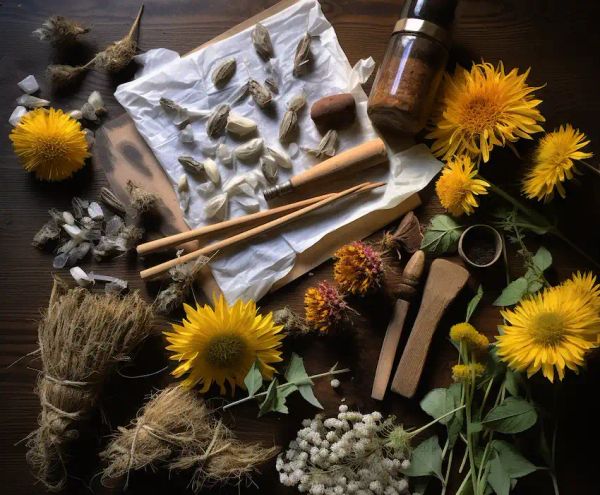Dandelions, those golden-bloomed plants that cover our lawns and fields, have a secret that often goes unnoticed. While we may be fascinated by their flowers and fluffy seeds, the true magic of dandelions lies beneath the ground, hidden within their roots.

In this article, let’s explore why dandelion roots are the unsung heroes of this amazing plant and how they offer more than just beauty.
Understanding the Anatomy of a Dandelion
Before we reveal the importance of dandelion roots, it’s essential to understand the plant’s structure. Dandelions, scientifically known as Taraxacum officinale, are perennial herbs that belong to the Asteraceae family. They consist of several parts, including leaves, stems, flowers, and roots, each playing a crucial role in the plant’s lifecycle and its relationship with humans.

Leaves: Dandelion leaves are packed with nutrients, such as vitamins A, C, and K, and essential minerals like potassium and calcium. These nutrient-rich greens are often used in salads and herbal teas.
Stems: The milky white latex sap found in dandelion stems has been used in traditional medicine for its potential healing properties.
Flowers: Dandelion flowers serve as a vital source of nectar for pollinators and hold cultural symbolism, representing resilience and hope. They are also used to make dandelion wine and herbal infusions.

Roots: Dandelion roots hold the key to a wide range of medicinal, culinary, and practical applications, making them the true stars of this unassuming plant.
The Healing Powers of Dandelion Roots
For centuries, dandelion roots have been cherished in traditional medicine for their liver-cleansing abilities. They stimulate bile production, aiding in digestion and detoxification. Additionally, their diuretic properties help flush toxins from the body.
Dandelion root tea can also bring relief to upset stomachs and alleviate constipation, promoting healthy digestion by nurturing a balanced gut microbiome.
The roots are rich in antioxidants, including beta-carotene and polyphenols, which combat free radicals, reducing the risk of chronic diseases and promoting overall well-being.
Moreover, dandelion roots contain compounds with anti-inflammatory properties that may alleviate symptoms of inflammatory conditions like arthritis.
Emerging research suggests that dandelion root extract has the potential to inhibit cancer cell growth, offering promise as a complementary therapy.
Exploring Culinary Adventures with Dandelion Roots
In addition to their medicinal benefits, dandelion roots can be used in various culinary creations. Here are some innovative ways to incorporate them into your cooking:
Roasted Dandelion Root Coffee: Ground and brewed, roasted dandelion root produces a caffeine-free beverage that resembles coffee, rich in flavor and aroma.
Dandelion Root Chips: Delicately sliced dandelion roots can be roasted or fried to create a nutritious alternative to conventional potato chips.
Dandelion Root Soup: Boiled or blanched dandelion roots add a delightful earthy essence to soups and stews.
Dandelion Root Salad: Add boiled or blanched dandelion roots to salads for a unique texture and flavor.
While dandelions are often dismissed as weeds, their roots harbor a hidden treasure trove of benefits. These unassuming underground gems offer a wealth of health advantages, culinary versatility, and even potential remedies for various ailments. As we rethink our perception of these resilient plants, it becomes clear that dandelion roots are indeed the most crucial part of the equation, gifting us with opportunities for enhanced well-being and gastronomic delight. The next time you come across a dandelion in your yard, take a moment to appreciate the wonders hidden beneath the surface.




